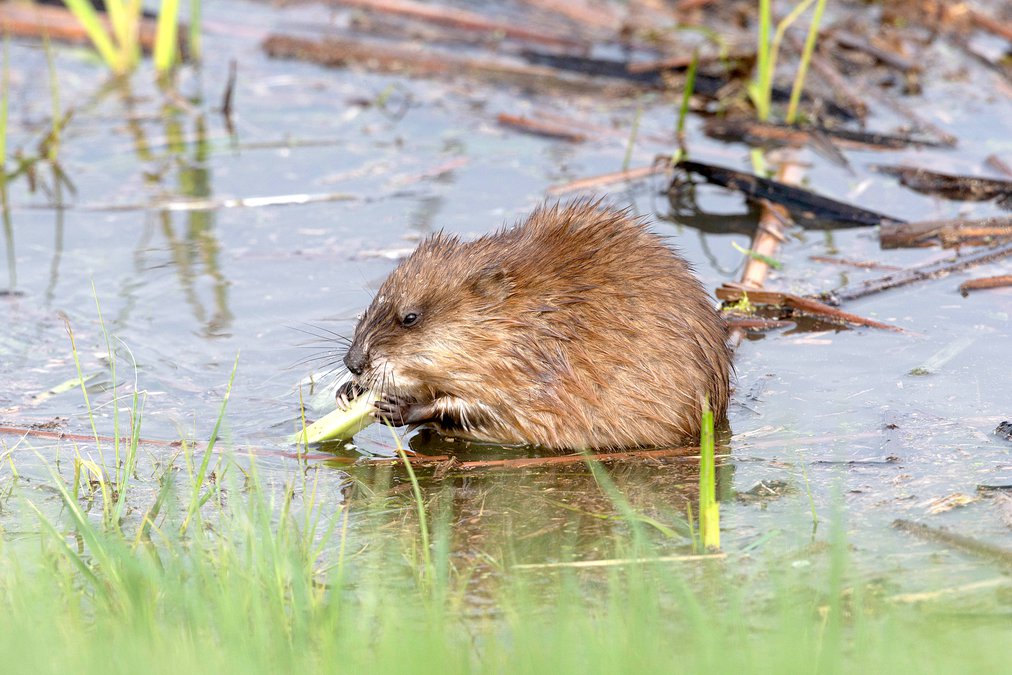



There are lots of things that occur in our marsh that we seldom see. Someone is eating someone or getting eaten or chased almost constantly. The easiest meals for us to watch are the eagles enjoying duck/goose tidbits. Another easy one to see is the cormorants diving for fish. Great Blue herons are masters at stabbing fish and gobbling frogs and snakes. I have several pictures of herons and egrets and pelicans stabbing and swallowing bullheads. It defies common sense and logic for those birds to be able to put one of these fish with sharp lateral fins down their throat without doing serious damage. But they do—head first with the fins sticking out. I have been “finned” by these fish and it hurts. They must have some digestive enzymes or acids that work fast on bullheads. Watch for the next edition of the Kansas Wildlife, Parks, Tourism to see some other amazing meals. “What’s for Lunch” is going to be a wonderful edition of the magazine. Nadia is taking the reins for the department in running the magazine since Mike Miller has accepted a new administration job in the organization. Kansas is blessed to have the talent and dedication of these folks and both parts of the department will be enhanced. Mike has produced the elegant magazine for lots of years and has a legacy in journalism that is rarely seen. Nadia has made us all better with her wisdom, enthusiasm, and joy for our outdoor world—and I personally appreciate her literary skills that help me write a small column for each edition.
That having been said, there is one other meal on legs that I haven’t been able to capture. When Jason called last week and said the “rats were out and about”, I was able to get the best muskrat pictures I have ever seen. The high water flooded the muskrat dens and they had to move babies and families to higher ground. The morning light and clear sky made for some great muskrat photos. It was a magic moment in the marsh to be able to capture those little guys on camera. A bonus was a Sora rail wandering the shoreline which I’ve not gotten previously. That’s another story. Almost every mound had a family or group feeding or building new digs. There seem to be more muskrats now than I can recall. There is another very private hunter that watches the muskrats carefully. We very seldom see these shy little critters but they are fierce and quick—Mink eat muskrats. They are similar in size, but the mink is quicker and focused. They usually get the young, old, weak or displaced muskrats. In water deep enough to swim the muskrat usually escapes, but in shallow water or on land the muskrat becomes tenderloin. Muskrats can produce up to three litters per year and have a life span of about one year according to Google. The muskrats were trapped for their fur in the Bottoms for years, but now they are protected. I have heard so many stories of ducks, geese, muskrats, turtles, etc that were harvested for food and commerce—I wish the Bottoms could talk and tell us the stories. Surviving the bombing and shelling runs of the airplanes and all the other stuff that has happened out there—wow! Now it is fragmites and pollution—there is going to be a very intense fund-raising effort for the Bottoms coming up. The pumps and gates are from the ’50s or so and are wearing out. DU and the Conservancy are stepping up and the department is adding funds—but I think the hunters, fishermen and birders that love this place will be glad to help with these projects. More about that later.
If you see a successful mink dragging a rat around by its neck or other parts—know that it was a huge effort by a fierce little hunter that will eat well and feed the kids in fine fashion. Just another little drama in the cattails that we never get to see. I wonder what else goes on???
Doc
Doctor Dan Witt is a retired physician and nature enthusiast.





